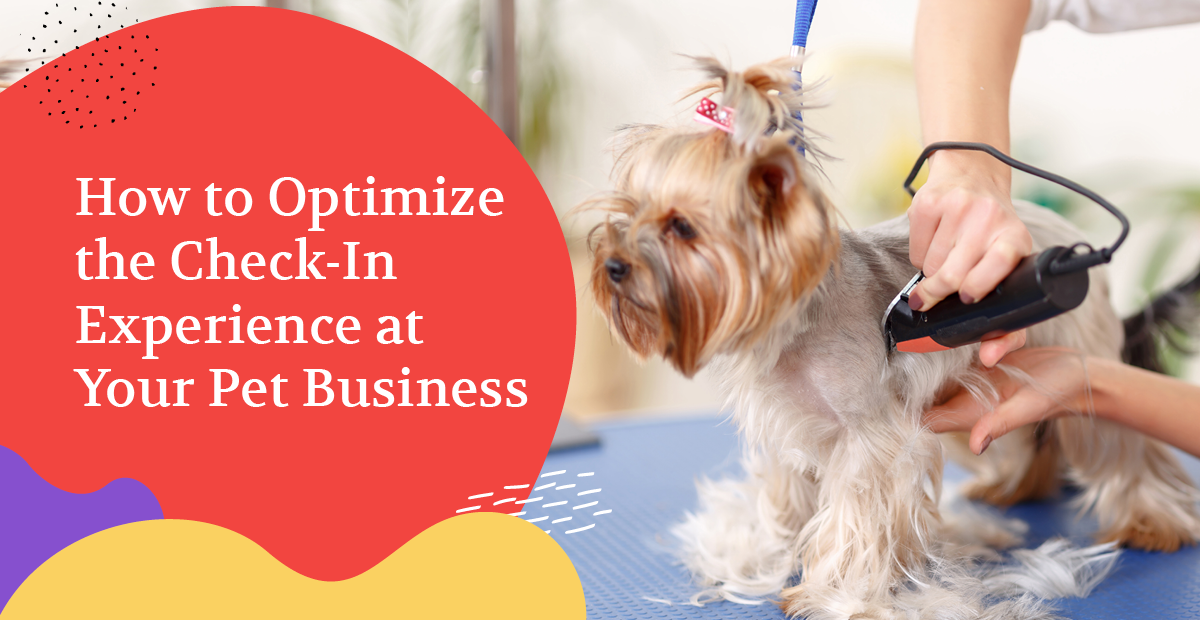Pet owners have high expectations when it comes to the care and well-being of their furry companions. For businesses like yours that focus on pets, a smooth and streamlined check-in experience not only builds trust with customers but also increases the overall efficiency of your operations.
From minimizing wait times to ensuring accurate record-keeping, we’ll explore four best practices to revolutionize the way you handle check-ins at your pet business. Whether you own a dog boarding business, are an experienced dog walker, or oversee a veterinary clinic, these insights will help you create a personalized check-in experience that suits your business model and exceeds client expectations.
Invest in the Right Technology
Chances are customers will be more inclined to frequent a business that uses mobile apps and online forms to streamline the check-in process, as opposed to a business that relies on piles of paper forms. To stay ahead of the curve, invest in technology that can meet the unique needs of pet care facilities.
For instance, the owner of a doggie daycare might benefit from investing in Gingr’s all-in-one software, as it’s specifically designed to help pet-care facilities efficiently check in customers. As you search for the right software, prioritize the following features:
- Online booking: Allow customers to request appointments, select service add-ons, purchase packages, and pay their deposits and invoices through an app or online booking system. You won’t receive endless phone calls, and the customer won’t have to pull out their card after every appointment.
- Precheck: Encourage customers to complete their paperwork online and provide important information about their pet’s vaccination status, health, and behavior ahead of their appointment. That way, you can screen pets in advance, reduce wait times, and eliminate the need for manual data entry.
- Report cards: Make note of each animal’s health, behavior, and general demeanor using digital report cards. Then, share and discuss this information with pet parents the next time they check in.
In addition to a dedicated check-in tool, consider investing in a customer relationship management (CRM) system that allows for efficient record-keeping. With a CRM, your pet care facility can store and access client information, including pet details, preferences, and special instructions, making check-ins faster and more personalized.
Extend a Warm and Friendly Greeting
Imagine a customer passing through the front doors of your facility with their pet. A friendly receptionist smiles warmly and says, “Welcome! How are you and your furry friend doing today?” This positive first impression reassures the customer that their pet is in good hands, and they feel confident about leaving their beloved companion in your business’s care.
If you want repeat business and positive word-of-mouth recommendations, which are crucial for the long-term success of your pet business, ensure the check-in experience is positive. This starts with:
- Being kind and welcoming. When customers enter your pet business, make sure to greet them with a warm and friendly demeanor. Smile, make eye contact, and use a positive tone of voice.
- Personalizing the greeting. Use the information stored in your software to personalize the greeting by addressing both the owner and their pet by name. If they are new to your facility, ask for their names and extend a warm welcome before beginning the check-in process.
- Offering assistance. Be proactive in offering assistance to customers as soon as they enter your business. Ask if they need help finding a specific product, information about your services, or guidance on navigating your facility.
A good first impression is crucial, and a simple greeting can set the tone for the entire customer experience at your business. Train staff on these customer service best practices and ensure that whoever is working at the front desk is exceptional at making customers feel at home.
Maintain a Clean and Comfortable Waiting Area
A clean, comfortable waiting area is essential to the check-in experience. If clients enter your facility to see a long line and a mess awaiting them, they are less likely to be satisfied with your services.
Ensure the health, safety, and satisfaction of owners and their furry guests by adding the following items to your waiting area:
- Regular cleaning and sanitization: Establish a routine cleaning schedule to ensure that your waiting area is consistently clean and sanitized. This includes wiping down surfaces, vacuuming or sweeping, and mopping the floors. Pay special attention to areas that pets frequent, like water bowl stations and pet-friendly seating.
- Comfortable seating: Choose comfortable seating options that are easy to clean and maintain. Arrange seats in a way that allows pet owners to have some space for their pets while still being considerate of other customers. Look for pet-friendly fabrics that are resistant to stains and scratches.
- Pet-friendly amenities: Make sure your waiting area is well-equipped to accommodate pets and their owners. Provide clean water bowls, toys, treats, and waste disposal stations. Regularly check and refill these supplies to keep them readily available for customers.
If you don’t have a dedicated cleaning crew, identify employees or team members who are detail-oriented and ask them to oversee these tasks. Provide clear guidelines and expectations, including a checklist with specific duties, schedules, and standards.
To engage them in the relatively mundane task of cleaning, eCardWidget recommends acknowledging employees who go above and beyond. For instance, you might hold a contest in which team members who demonstrate the greatest initiative in cleaning and replenishing amenities receive a prize.
Prioritize Effective Communication
Effective communication ensures that both pet owners and facility staff are on the same page, leading to smoother interactions and improved client satisfaction. To help pet owners feel informed and confident in leaving their pets in your care, keep these tips in mind:
- Communicate check-in procedures to customers in advance. Provide information on where to park, what documents or records to bring, and any specific requirements for the check-in process. Clear instructions help customers feel prepared and reduce confusion.
- Keep pet owners informed about wait times and potential delays. Use digital tools, such as text messages or mobile apps, to provide real-time updates on pet statuses and estimated wait times. This practice can help reduce frustration and anxiety for both pet owners and their animals.
- Be transparent about pricing, services, and any additional fees that may apply. Pricing and services should be prominently displayed on your website, front desk, and check-in software. Your front desk staff should be able to explain these prices and account for any additional fees before the service begins. For example, while checking in a dog that requires extensive dematting, a dog groomer should explain that additional fees will incur due to the extra time needed to comb through and shave the fur.
Additionally, consider sending clients a survey to understand what aspects of the check-in process are working well and where there might be room for improvement. This feedback loop demonstrates your commitment to delivering top-notch service and shows clients that their opinions matter.
Happy customers are more likely to return and recommend your services to others. By implementing these tips, you can create a positive check-in experience that not only satisfies your customers but also builds loyalty and trust in your pet business.
Authored by Casey Dorman

Hi, I’m Casey! I’m the Sales Manager at Gingr software. Originally from Indianapolis, I now live in Colorado with my wife and dog, Dexter. Our hobbies include hiking, skiing, and visiting local breweries.


